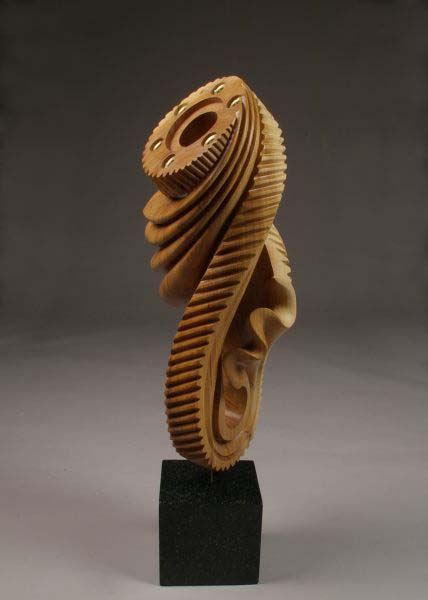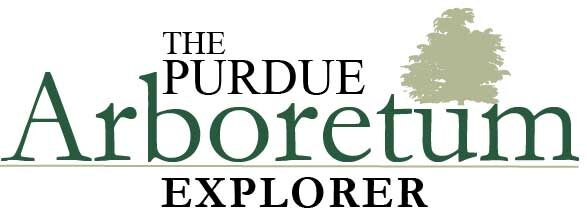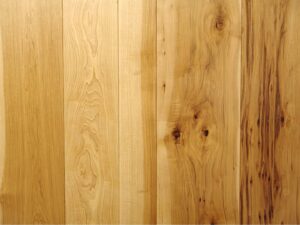Carya ovata
Summary
Shagbark hickory has a history of being used in “Old Hickory Furniture”, as well as tool handles and other dowel type applications. Shagbark hickory is commonly a range from pale brown to reddish-brown with streaks, bird peck, small bark pockets, and small knots. This material is not resistant to decay and is rated as one of the better woods for steam bending.
Looking at the panels from left to right, Board 1 shows a beautiful light reddish-brown heartwood with semi-distinct growth rings. Board 2 is all white sapwood. Board 3 is quarter-sawn hickory and mostly sapwood with small ray fleck. Board 4 shows some of the characteristics present in hickory such as bird peck and knots. Board 5 shows heavy bird peck and dark stains.
History
Shagbark hickory has an unique application in the furniture industry known as “Old Hickory Furniture”, which originated around 1900 in Indiana. “Old Hickory Furniture” is furniture made from hickory rounds or saplings with the bark left on. This rustic furniture was used in multiple parks and other natural areas around during this time frame. Hickory was also implemented initially in car bodies and spokes in wood wheels.
Color & Texture
Hickory has a heartwood of pale brown to reddish-brown with streaks, bird peck, small bark pockets, and small knots. The sapwood is whitish to yellowish white, and is subject to oxidation stains in the warm summer months.
Anatomical and Microscopy
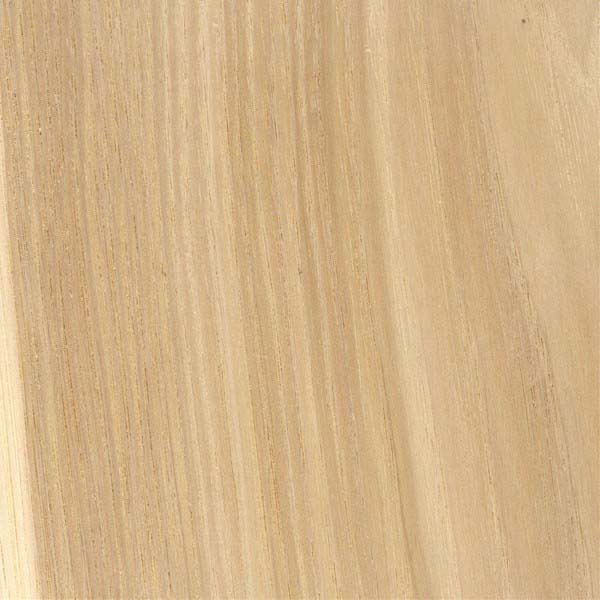
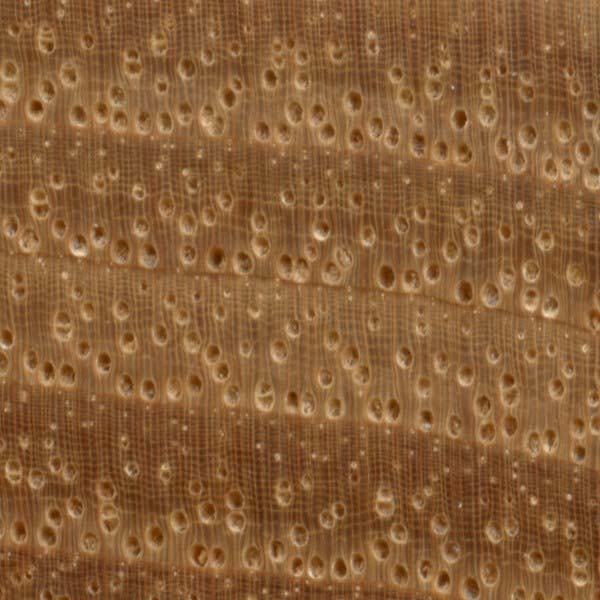
Ring-porous; large to very large earlywood pores in a single intermittent row, medium to small latewood pores solitary and radial multiples of 2-3, few; tyloses common; parenchyma reticulate (bands absent from earlywood row in true hickory group, but present in pecan hickory group); narrow rays, close spacing.
Wood Properties
- Workability
- Excellent for boring, and rated better than average-intermediate in planing, turning, and shaping
- Strength
- Strongest wood of all North American hardwood species
- Steam Bending
- One of the better woods for bending
- Drying
- A mild kiln schedule must be used
- Shrinkage
- Highest shrinkage
- Decay
- No resistance to decay
Products
Hickory is commonly used in furniture applications, as well as tool handles, ladder rungs, drum sticks, and other dowel-type applications. In sports, it has been used in the past for skis, golf club shafts, and gymnastic bars. Hickory has also been used in agricultural implements and is commonly prized for smoking meats, making skewers, and fuel wood due to high density.
